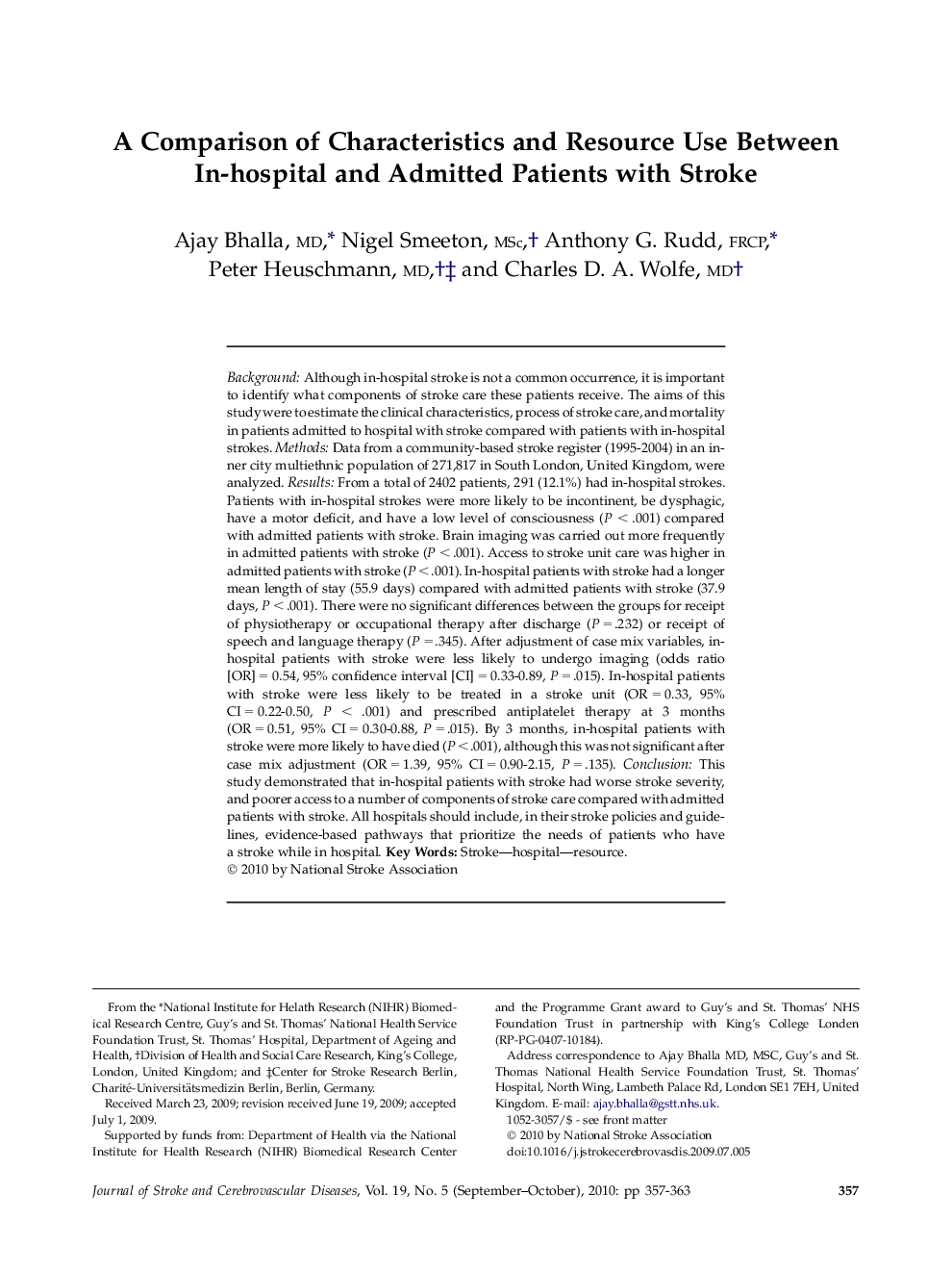| کد مقاله | کد نشریه | سال انتشار | مقاله انگلیسی | نسخه تمام متن |
|---|---|---|---|---|
| 2702241 | 1144524 | 2010 | 7 صفحه PDF | دانلود رایگان |

BackgroundAlthough in-hospital stroke is not a common occurrence, it is important to identify what components of stroke care these patients receive. The aims of this study were to estimate the clinical characteristics, process of stroke care, and mortality in patients admitted to hospital with stroke compared with patients with in-hospital strokes.MethodsData from a community-based stroke register (1995-2004) in an inner city multiethnic population of 271,817 in South London, United Kingdom, were analyzed.ResultsFrom a total of 2402 patients, 291 (12.1%) had in-hospital strokes. Patients with in-hospital strokes were more likely to be incontinent, be dysphagic, have a motor deficit, and have a low level of consciousness (P < .001) compared with admitted patients with stroke. Brain imaging was carried out more frequently in admitted patients with stroke (P < .001). Access to stroke unit care was higher in admitted patients with stroke (P < .001). In-hospital patients with stroke had a longer mean length of stay (55.9 days) compared with admitted patients with stroke (37.9 days, P < .001). There were no significant differences between the groups for receipt of physiotherapy or occupational therapy after discharge (P = .232) or receipt of speech and language therapy (P = .345). After adjustment of case mix variables, in-hospital patients with stroke were less likely to undergo imaging (odds ratio [OR] = 0.54, 95% confidence interval [CI] = 0.33-0.89, P = .015). In-hospital patients with stroke were less likely to be treated in a stroke unit (OR = 0.33, 95% CI = 0.22-0.50, P < .001) and prescribed antiplatelet therapy at 3 months (OR = 0.51, 95% CI = 0.30-0.88, P = .015). By 3 months, in-hospital patients with stroke were more likely to have died (P < .001), although this was not significant after case mix adjustment (OR = 1.39, 95% CI = 0.90-2.15, P = .135).ConclusionThis study demonstrated that in-hospital patients with stroke had worse stroke severity, and poorer access to a number of components of stroke care compared with admitted patients with stroke. All hospitals should include, in their stroke policies and guidelines, evidence-based pathways that prioritize the needs of patients who have a stroke while in hospital.
Journal: Journal of Stroke and Cerebrovascular Diseases - Volume 19, Issue 5, September–October 2010, Pages 357–363